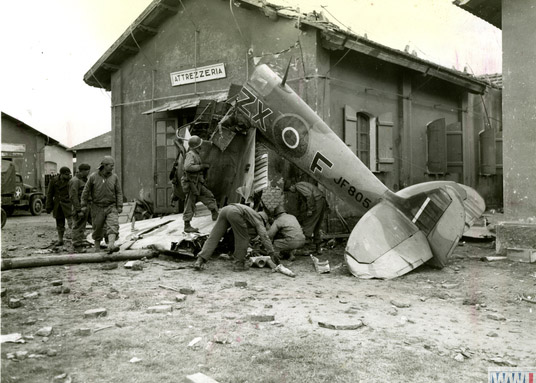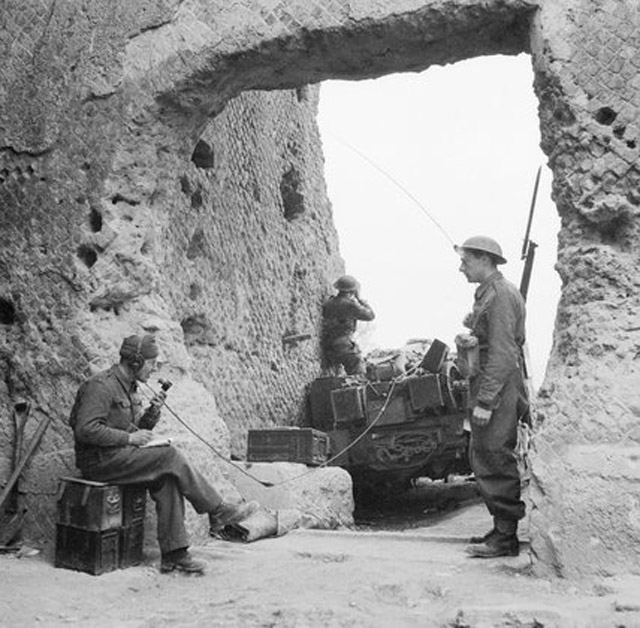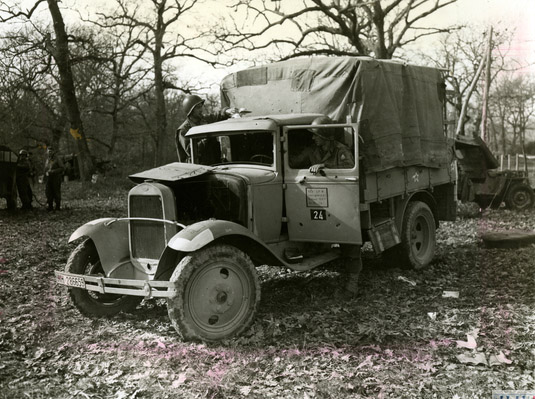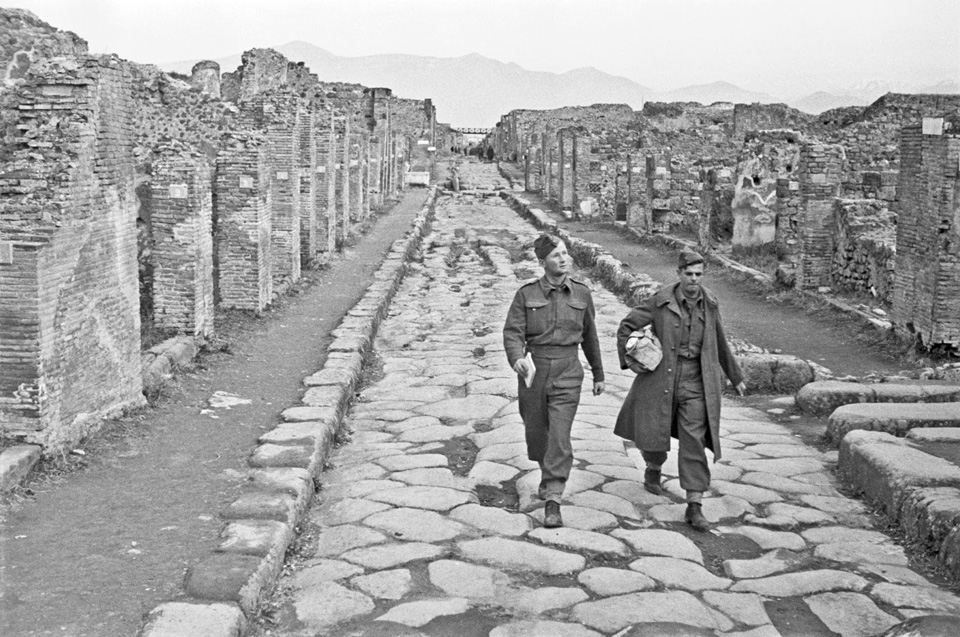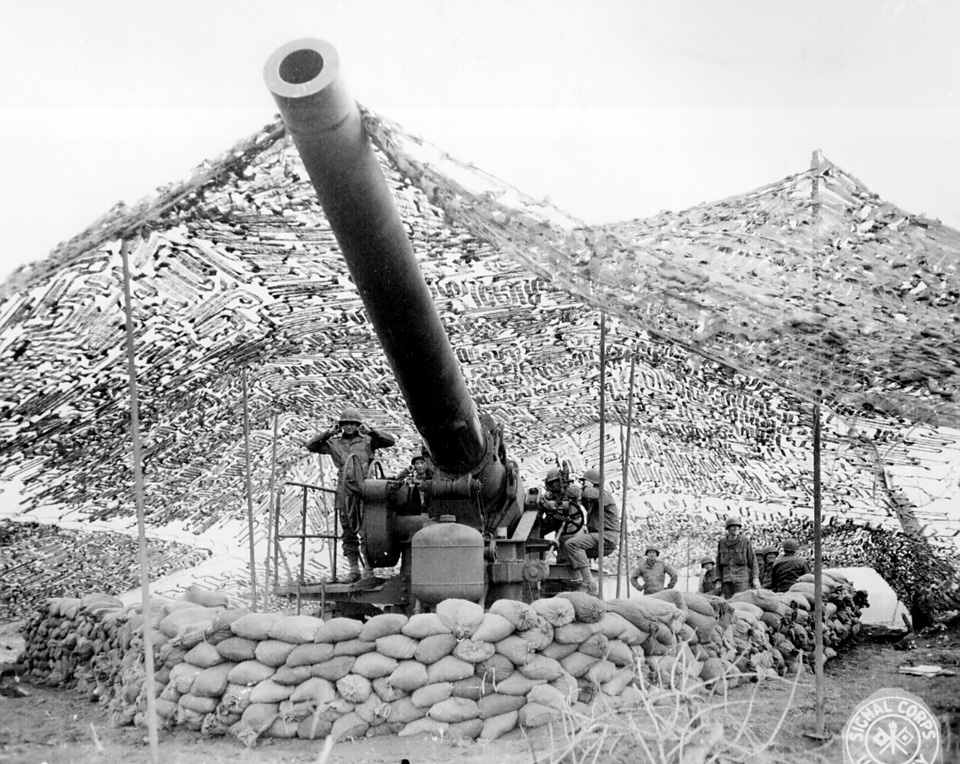Air Operations, Bismarcks
- 26 42nd Medium Bomb Group B-25s, with a large fighter escort, attack the Lakunai airfield at Rabaul. 18 XIII Bomber Command B-24s, with a large fighter escort, attack the Vunakanau airfield at Rabaul. 18 VMTB-233 TBFs, escorted by 50 AirSols fighters, mount a hastily planned late-afternoon attack against a single Japanese ship in Simpson Harboróa small water tender that is easily sunk.
- VF-17 F4Us and a VMF-211 F4U down 3 A6M Zeros over Rabaul between 1110 and 1120 hours. VF-17 F4Us down a Ki-61 'Tony' fighter and 9 A6M Zeros over Simpson Harbor at 1740 hours. VMF-215 F4Us down 11 Zeros and 'Tonys' over the Rabaul area between 1800 and 1830 hours. 1 F4U and 1 TBF are downed.
- V Bomber Command A-20s attack barges along New Britainís northern coast and V Fighter Command P-39s attack fuel dumps and barges in Rein Bay.
- The Cape Gloucester airfield on New Britain is declared operational and is immediately put to use by C-47 transport aircraft carrying in urgently needed supplies.
- The 42nd Medium Bomb Groupís new 100th Medium Bomb Squadron makes its combat debut over Rabaul.
Air Operations, CBI
BURMA- 6 490th Medium Bomb Squadron B-25s attack bridges at Meza, Zawchaung, and near Kyungon. 8 14th Air Force P-40s strafe buildings at Loiwing airfield.
Air Operations, Europe
There is a daylight raid on Brunswick by US aircraft. A US Thunderbolt group shoots down 36 German and Italian fighters and a formation of Ju-52s for the loss of 1 fighter. Future action by the Luftwaffe in Italy is sharply limited when US 15th Air Force planes attack German air facilities in the Po valley.
RAF BOMBER COMMANDBattle of Berlin
Evening Ops:
- Berlin is the target as 540 planes are sent. This total includes 446 Lancasters, 82 Halifaxes and 12 Mosquitoes. 43 aircraft abort for a number of reasons.
- The bombers take off in the late afternoon on a fine clear day. It is clear over England but there is wide cloud cover and icing over Germany which hampers the night fighters. The night fighters catch up to the bomber stream about 70 miles from Berlin. About 20 bombers are shot down on the approach, over the city and on the first part of the return route. There is thick cloud cover over the bombing area and as a result, there are no photos on either the 28th or 30th to determine if the raids are successful. The bombers came in from the northwest and produced and area of destruction along the same path both nights. The time over the target is 20:13-20:27. 1,896 tons of bombs are dropped including 1,029 tons of high explosives and 867 tons of incendiaries. Almost all districts in Berlin are hit in the 3 raids. The reported damage includes 2,923 buildings destroyed, 4,116 severe damaged and 4,576 with medium damage. 171,000 people have been bombed out. 1,341 people are killed and 1,090 are missing. Districts suffering the worst damage include Charlottenburg, Schoneberg and Kreuzberg, the first two of which had been hit in a November raid.
- 33 planes are lost on the mission which include 32 Lancasters and 1 Halifax. The aircrew casualties include 193 killed and 53 POWs.
- 22 Mosquitos are sent to Elberfeld, 5 to Brunswick, there are 8 RCM sorties, 7 Serrate patrols, 12 Stirlings lay mines in the Gironde River and there are 22 OTU sorties.
- There are no losses.
GERMANY:
- Unable to visually pinpoint their briefed aircraft-industry targets in and around Brunswick, 599 8th Air Force B-17s and B-24s attack the various industrial sites throughout the area that they can locate. 39 B-24s divert to Hannover due to heavy smoke and contrails encountered over Brunswick. In all, the 8th Air Force drop 1,747 tons of bombs, mostly on Brunswick.
- 18 B-17s and 2 B-24s are lost
- A total of 635 USAAF fighters provide escort and support for the heavy bombers account for 47 Luftwaffe over Germany and the Netherlands between 1130 and 1345 hours.
ITALY:
- Bad weather limits operations by the 12th Air Force, bu some XII Bomber Command B-25s are able to attack towns and two road junctions.
- XII Air Support Command A-20s attack a town and a road junction.
- XII Air Support Command fighter-bombers attack a town.
- XII Air Support Command fighter-bombers attack barges and fishing boats off Zara.
ITALY:
- 15th Air Force B-24s attack strike targets in the Po River Valley.
- When the four Luftwaffe airfields and landing grounds in the Udine Airdrome complex, in northeastern Ital, are targeted, it is decided to send the 325th Fighter Group, in 60 P-47s, early and below the effective level of German radar in order to take advantage of the Luftwaffe practive of flying all their serviceable aircraft to safety as soon as incoming bombers are pinpointed. After flying more than 300 miles at wavetop height, the P-47s suddenly gain altitude and fly directly into the Luftwaffe formations just as they are being scrambled. The resulting ambush nets 37 confirmed victories for the P-47 pilots alone.
- Five minutes after the 325th Fighter Group opens its attack, 152 15th Air Force B-17s and 63 B-24s, escorted by 14th and 82nd Fighter Group P-38s, attack all four airfields in the Udine complex, causing heavy destruction. As many as two dozen aircraft are destroyed or severely damaged on the ground.
- 1 B-17 and 2 B-24s are lost
Air Operations, Marshalls
- In ongoing neutralization strikes, US carrier aircraft from Task Group 58.3 attack targets in tje Eniwetok Atoll, especially the Engebi airfield on Eniwetok, where all 15 G4M 'Betty' bombers in residence are destroyed in their revetments. Among numerous other missions, the carrier aircraft mount 400 effective sorties against Roi, Namur, and Kwajalein islands, which are the immediate objectives of the invasion fleet that will arrive on station at Kwajalein Atoll after dark. The Wotje Atoll is also attacked by carrier aircraft.
- VII Fighter Command P-39s and P-40s continuously patrol over the Mille airfield and strafe the runway throughout the day.
- A VF-12 F6F downs an A6M Zero near the Taroa airfield on Maloelap at 1130 hours.
- At 2000 hours, the escort carriers of Task Unit 53.1.6 (Northern Attack Force Carrier Unit) are released from convoy escort duty to undertake pre-landing and ground-support missions.
- During the night, VII Bomber Command B-24s mount continuous small attacks against the Kwajalein Atoll. Also, the invasion of the Marshalls begins with an unopposed night landing by US Army troops and US Marine scouts on several islands in the Majuro Atoll.
Air Operations, New Guinea
34 V Bomber Command B-24s attack the landing ground at Nubia and targets around Hansa Bay.
[Barents Sea
U-278 hits the British destroyer Hardy with a Gnat badly damaging the British ship. The British destroyer Venus rescues the survivors and then scuttles the badly damaged ship. 48 of the Hardy's crew are lost.
[Battle of the Atlantic
- U-314 is sunk by the British destroyers Whitehall and Meteor during the passage of convoy JB-56B to the Kola Inlet.
- U-364 is sunk in an attack by Wellington 'K' of No 172 Squadron RAF.
|
|
Eastern Front
In the northern sector the Russian 42nd Army and 2nd Assault Army occupy a long stretch of the east bank of the lower Luga River. Savage fighting continues in the Korsun-Shevchenkosky area.
NORTHERN SECTORLeading elements of the 42nd and 2nd Shock Armies of the Leningrad Front reach the Luga River, behind which the Germans plan to make a stand. The mechanization of the Soviet forces has enabled them to outpace the 18th Army. The fighting since January 14 has cost the German 18th Army 20,000 casualties.
SOUTHERN SECTORThe 3rd and 4th Ukrainian Fronts renew their attacks against Hollidt's 6th Army, this time the main assault being launched by the 46th and 8th Guards Armies of the 3rd Ukrainian front from the Krivoi Rog area, the 37th and 6th Armies supporting to the right and left. To the south the 5th Shock Army, 3rd Guards and 28th Armies of the 4th Ukrainian attack the Nikopol bridgehad. In all the Soviets commit 257,000 combat infantry to the attack, supported by 1,400 tanks.
Hollidt, with 47,000 combat infantry and 250 tanks between the IV and XVII Corps in the bridgehead, the XXIX Corps around Berislav and the XXX Corps north of Nikopol, with the LVII Panzer Corps in mobile reserve, is unable to hold off these new Soviet attacks. Fretter Pico's XXX Corps is struck hard by the 8th Guards and 46th Armies and comes close to collapse.
[France, Politics
A conference of the governors of the French colonies and the representatives of the Consultative Assembly is opened at Brazzaville. The main subject discussed is the new French strategy toward the peoples of the overseas territories, the first step towards the creation of the Union Française. Gen de Gaulle is present.
[Indian Ocean
The battleships Queen Elizabeth and Valiant, and the battlecruisers Renown with the carriers Illustrious and Unicorn arrive in Colombo from European waters. A battleship and a small carrier are already on the station and an increasing number of submarines are in operation in the area.
[Italy
At the south end of the 'Gustav' Line the British 5th Div breaks through and captures Monte Natale. Nearer the main focus of action opposite Monte Cassino, the US 34th Div manages to maintain its holding on the west bank of the Rapido. At Anzio the planned Allies attacks begin. The British 1st Div pushes forward a little but takes heavy punishment. In the American sector, a Ranger battalion leading the attack has all but 6 men killed or captured. The attacks continue with further heavy loss and no worthwhile gains for the next 3 days.[MORE]
[Marshalls
Task Force 58 continues its operations against Kwajalien, Roi, Namur and Eniwetok. 7 battleships are involved in bombardment missions and 400 bombing sorties are flown.
US carrier-based aircraft are responsibile for sinking the Japanese submarine chasers Nos. 18, 19, 21, and 28 and the auxiliary submarine chaser No. 25 in this operation.
[New Britain
Lt-Col Lewis B. 'Chesty' Puller takes command of southern patrols to locate and clear Japanese forces from Borgen Bay to the Itni River as part of the effort to clear the enemy from western New Britain. Puller's force, consisting of 384 men, departs Arulupella. The force is resupplied periodically by air drops from small planes.
[Pacific
- The US submarine Seahorse (SS-304) attacks a Japanese convoy on the Palau-Rabaul track and sinks the army cargo ship Toko Maru (2747t) southeast of Palau.
- The US submarine Spearfish (SS-190) attacks a Japanese convoy sinking the transport Tamashima Maru (3560t) about 400 miles north-northeast of Saipan.
Images from January 30, 1944
|
|
|
|
|
|
